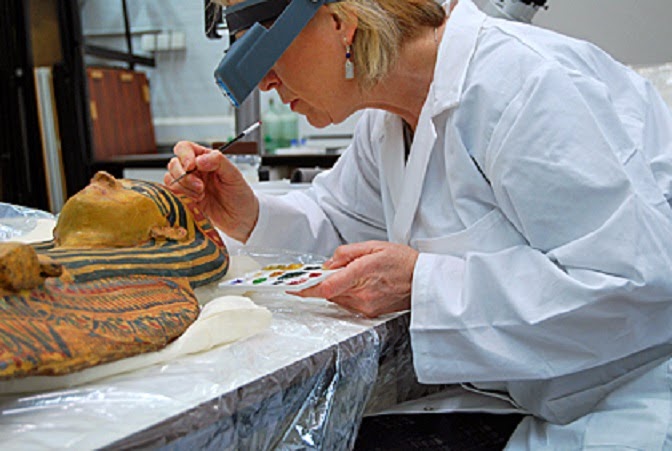
case in the studio at National Museums Liverpool [Credit: © Warrington
Museum and Art Gallery]
Fortunately National Museums Liverpool was able to provide the necessary cosmetic treatment. Conservator Tracey Seddon explains, “The crystals were developing on areas of restoration carried out 30-40 years ago and were causing the paint to crumble and lift. Fortunately the Ancient Egyptian paintwork was spared, but the ‘rot’ was disfiguring the coffin and threatening to damage the artwork of the ancient craftsmen.”
Careful conservation treatment has removed the crystals and the loose paint has either been secured with a conservation-grade adhesive, or removed if too crumbly. The damaged areas have then been painted with a thin adhesive solution to prevent further loss and the patches have been re-integrated using archival quality paint. Lost areas of the original paint scheme were not painted in as that could be misleading for gallery visitors and scholars in the future.

Museum and Art Gallery]
Although this painted coffin case and lid is usually known as a “mummy case” the actual occupant of Warrington’s coffin was a male. The writing on the coffin tells us it belongs to a man called Pa-ikh-mennu. He worked at the temple of Amun in Thebe in modern Luxor. Parts of the mummy case have been recycled from an earlier coffin because good quality wood was scarce in Egypt. The coffin was given to the museum in 1905 as a gift from the Egypt Exploration Society.
The Museum is looking forward to welcoming back this popular exhibit and visitors will be able to admire Tracy’s skilful restoration by the beginning of April.
Source: Warrington Museum and Art Gallery [March 24, 2014]